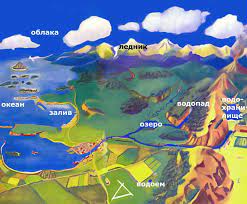SHARE WITH FRIENDS:
Hydrosphere and water resources haqgeneral information
Importance of water in the biosphere and national economy
The shell of the Earth's surface, consisting of water, is called the hydrosphere. It includes all waters in the biosphere - oceans, seas, lakes, rivers, glaciers, groundwater and water vapor in the atmosphere.
The total amount of water in the hydrosphere is approximately 1403 million km3 of which ocean waters are 1370 million km3, glaciers 24 million km3, underground water 8 million km3, lake waters 0,23 million km3, the water contained in the soil is 0,007 million km3, the water in the atmosphere is 0,014 million km3, river waters 0,002 million km3 constitutes water.
"We created life in water," says the Holy Qur'an. Indeed, there is no life without water! Water is fundamentally different from other natural resources as it is used in all areas of our daily life. Coal, oil, gas and other fuels can substitute for each other, or thermal energy, electricity, nuclear energy and solar energy can be used. But there is no other natural resource that can replace water in our daily life.
The importance of water in our daily life is as follows:
1. Water actively participates in all processes in the biosphere and, in particular, in the process of photosynthesis, exchange of matter and energy. For example, in the process of photosynthesis, 225 billion tons of oxygen are released per year, and about 300 billion tons of organic substances are created.
2. All water sources on the globe (oceans, rivers, seas, lakes, glaciers, reservoirs, etc.) regulate the temperature regime, i.e. climate, on our planet.
Water in the hydrosphere absorbs solar energy in summer and protects the environment from cooling in winter. Water vapor in the atmosphere is a filter of solar radiation.
-
Water is a means of survival for all living organisms. Because there is a certain amount of water in the tissues of any living organism. For example, an adult's body is up to 70% water, while young babies are 97% water.
Plant and animal tissues contain about 50-90% water, meat contains 50%, and milk contains about 85-90% water.
-
Chemical and biochemical processes cannot take place without water.
